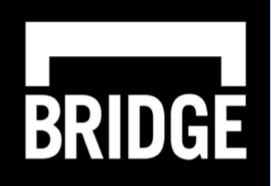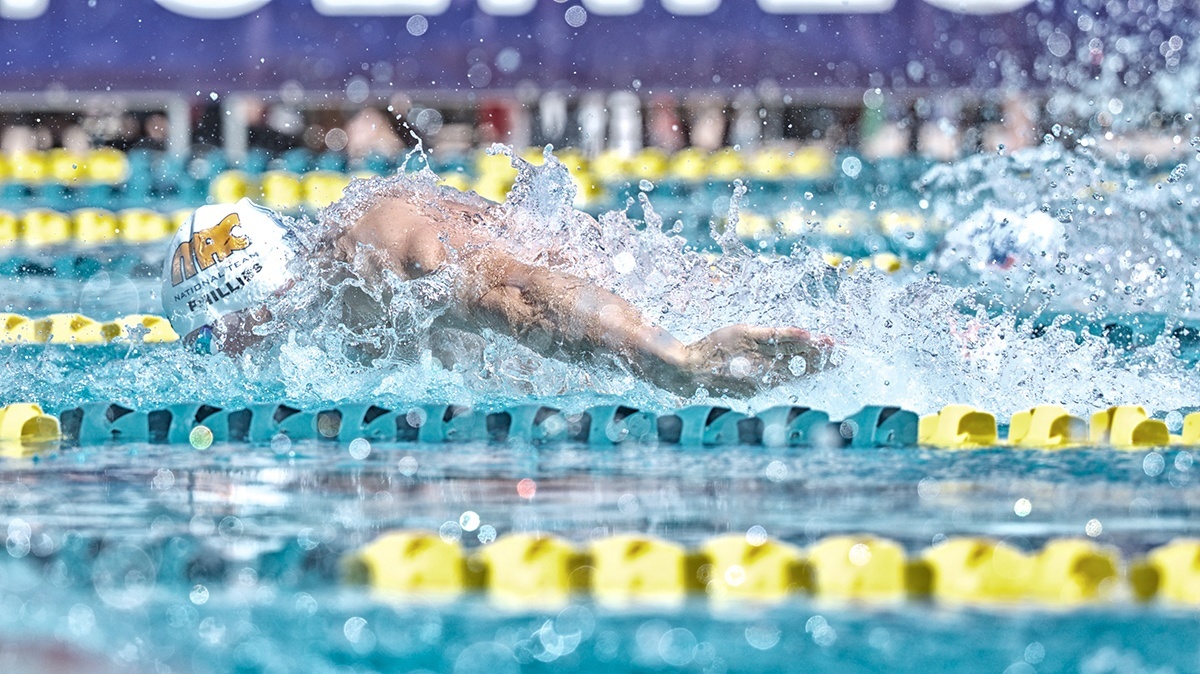The ability to maintain proper stroke technique at a high velocity in long course racing separates the elite swimmers from the rest. To hold your stroke together at the end of a grueling race, you must generate enough power in your catch so you can ride the momentum on the recovery of each armstroke. This week we’ll address the 3 short axis exercises that will help make your butterfly and breastroke both easier and faster.
1. Lat Pull-Down
An explosive pull-down is essential to short axis strokes. Whether you’re perfecting a breastroke pull-down or a butterfly breakout, you need to engage your lats at the top of your catch, then maintain a constant hold on the water as you pull past your body midline. Replicate this motion with the lat pull-down in your dryland. If you don’t have access to a cable machine, you can do this by holding either end of an elastic band attached to a bar or hook above you. Pull your shoulder blades down while squeezing the space between them as you move through the exercise. This ensures the muscle is firing as you work against the resistance of the band or cable.
2. Stability Ball Pike Ups
Another power point in short axis strokes is the forward hip movement during each breath. This part of your stroke requires connection from the fingertips in the catch through the midsection to drive your hips forward while maintaining a “downhill” angle in your bodyline. The better this connection, the easier it will be to generate power throughout the pull. Replicate this power movement with stability ball pike ups. With both feet on the stability ball, hands on the ground, and body in a push up position, move into a pike position by hinging at the hips, pause, then return with control to the start position. As you get better at the movement, work on an explosive contraction to pike up, with a controlled return. This will help create more power with each stroke in the pool.
3. Bridge Exercises
To take advantage of a powerful catch, swimmers use core stability to glide effectively during the stroke recovery. The best swimmers find easy speed and energy conservation from great distance per stroke and a streamlined body position. Harness your core stability by incorporating bridging exercises into your dryland. Bridges place your body in the same position as the extended portion of your stroke. You will carry more speed through the water if your core is engaged and your bodyline tight.
For more stroke-specific exercises and instructional videos, check out BridgeStrength for Swimming to fulfill swimmers’ strength needs. Stay tuned next week for BridgeAthletic’s dryland exercises for long axis strokes!
 BridgeAthletic works with elite professional, collegiate, and club swimming programs to provide a turnkey solution for dryland training. Led by Nick Folker, the top swimming strength and conditioning coach in the world, our team builds stroke-specific, custom-optimized dryland programs for each of our clients. The individualized workouts are delivered directly to athletes via our state of the art technology platform and mobile applications. Check Nick and BridgeAthletic out as recently featured in SwimSwam.
BridgeAthletic works with elite professional, collegiate, and club swimming programs to provide a turnkey solution for dryland training. Led by Nick Folker, the top swimming strength and conditioning coach in the world, our team builds stroke-specific, custom-optimized dryland programs for each of our clients. The individualized workouts are delivered directly to athletes via our state of the art technology platform and mobile applications. Check Nick and BridgeAthletic out as recently featured in SwimSwam.
 Nick Folker is the Co-Founder and Director of Elite Performance at BridgeAthletic. Nick’s roster of athletes includes 35 Olympians winning 22 Olympic Medals, 7 team NCAA Championships and over 170 individual and relay NCAA championships. Megan Fischer-Colbrie works as the Sports Science Editor at BridgeAthletic. Megan was a four-year varsity swimmer at Stanford, where she recently graduated with a degree in Human Biology.
Nick Folker is the Co-Founder and Director of Elite Performance at BridgeAthletic. Nick’s roster of athletes includes 35 Olympians winning 22 Olympic Medals, 7 team NCAA Championships and over 170 individual and relay NCAA championships. Megan Fischer-Colbrie works as the Sports Science Editor at BridgeAthletic. Megan was a four-year varsity swimmer at Stanford, where she recently graduated with a degree in Human Biology.
The Championship Series by BridgeAthletic is designed to empower athletes with tips from the pros that will help them reach peak performance come race day. We will be covering competition-focused topics such as nutrition, recovery, stretching, and mental preparation.


very good and I would like to see more video of michal phipples traning